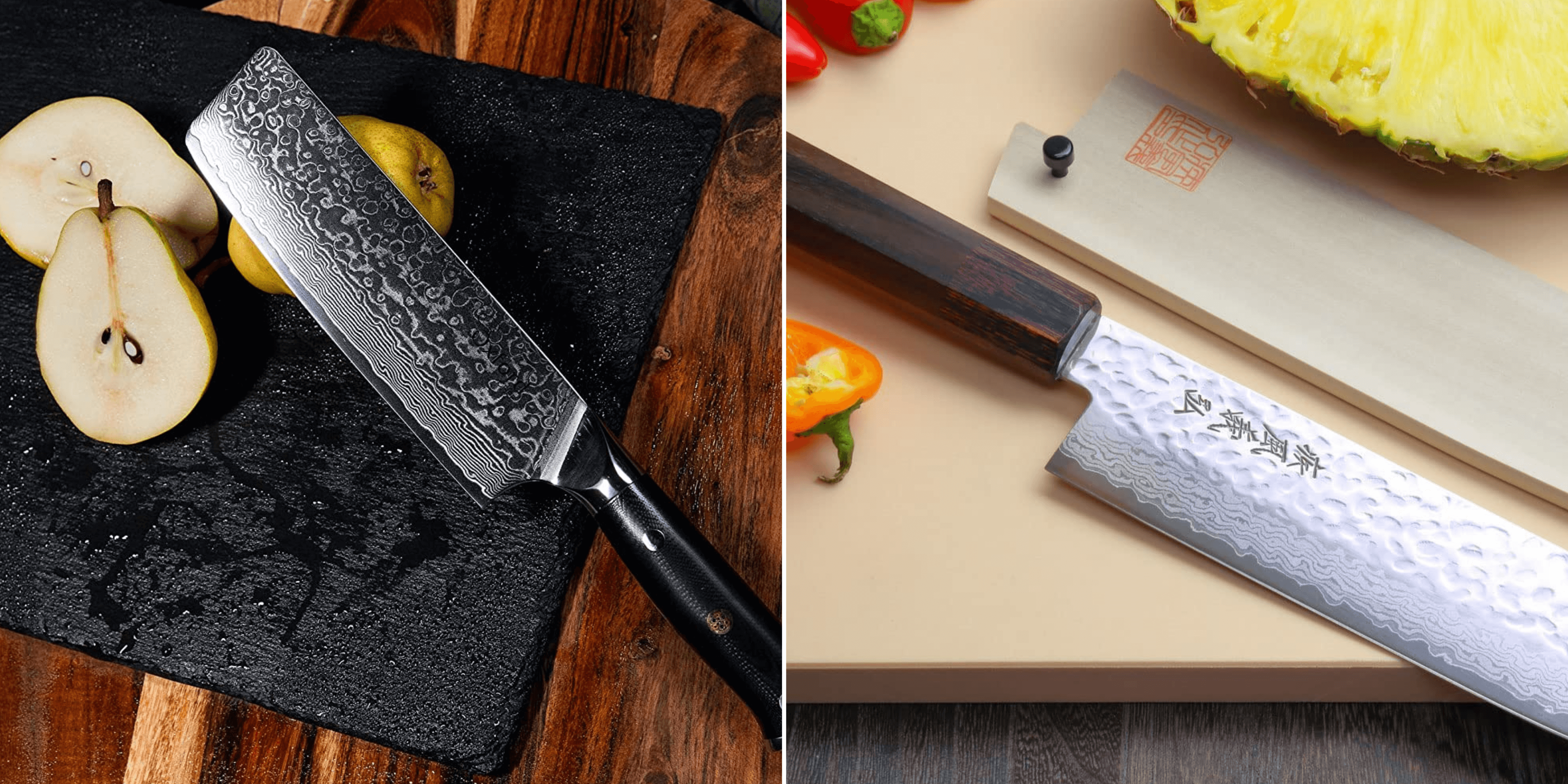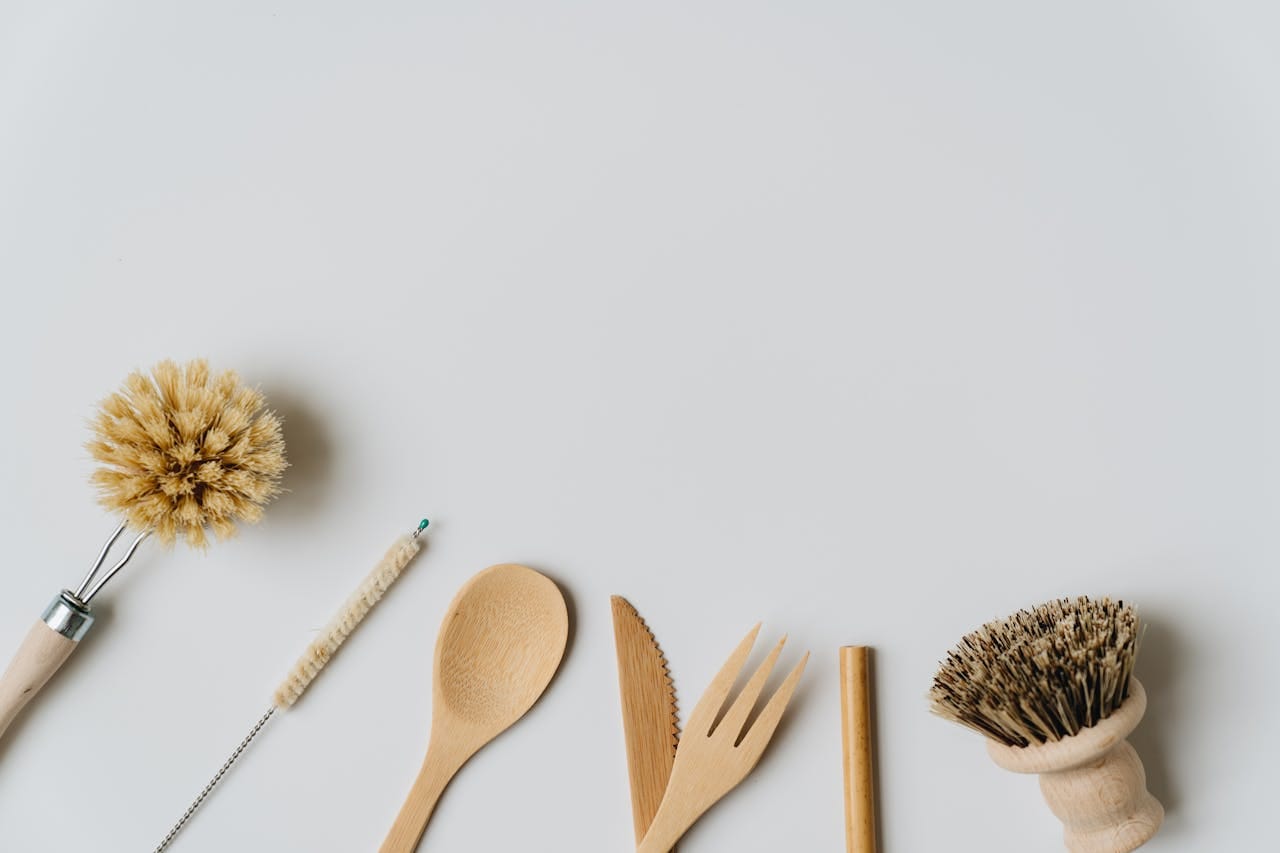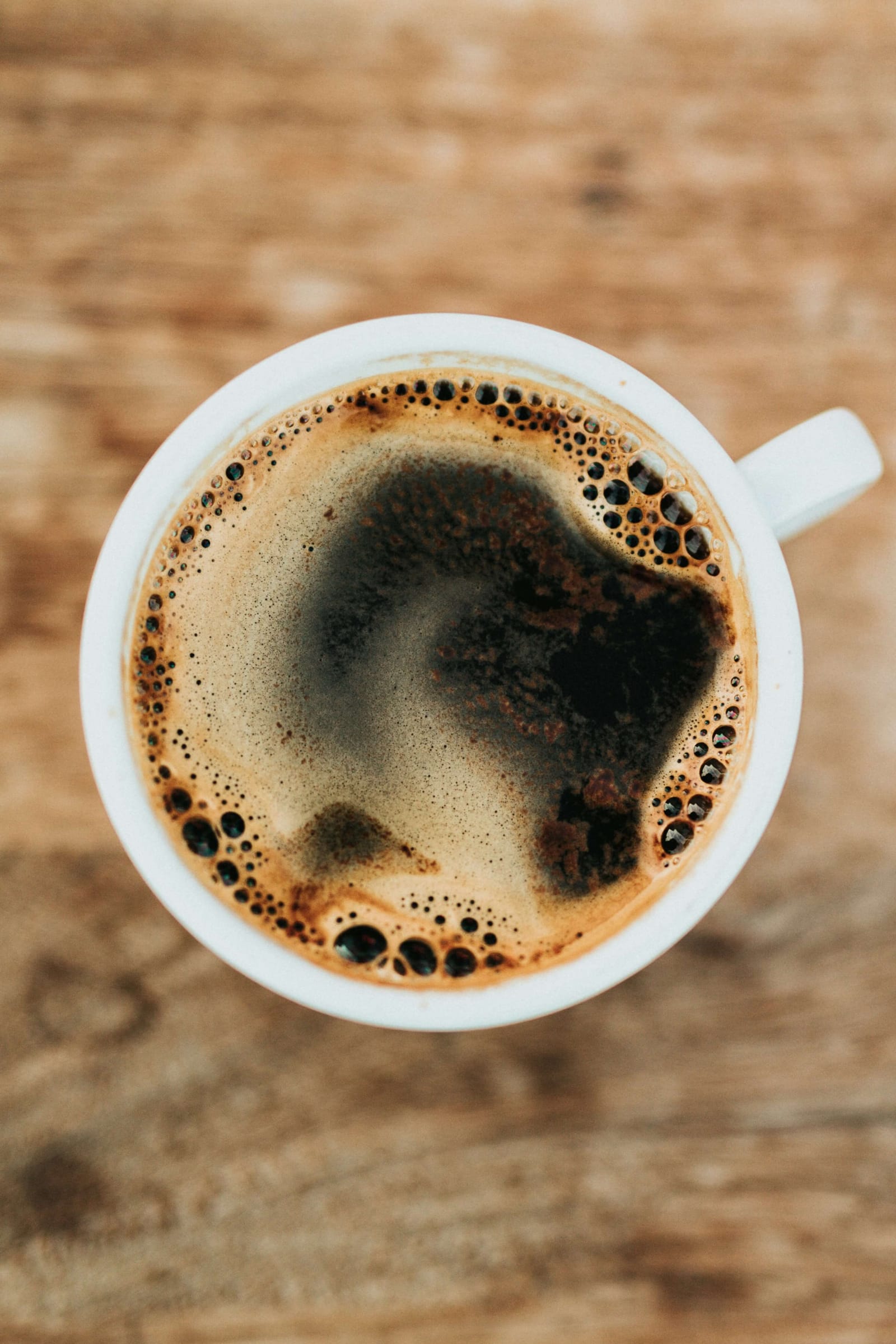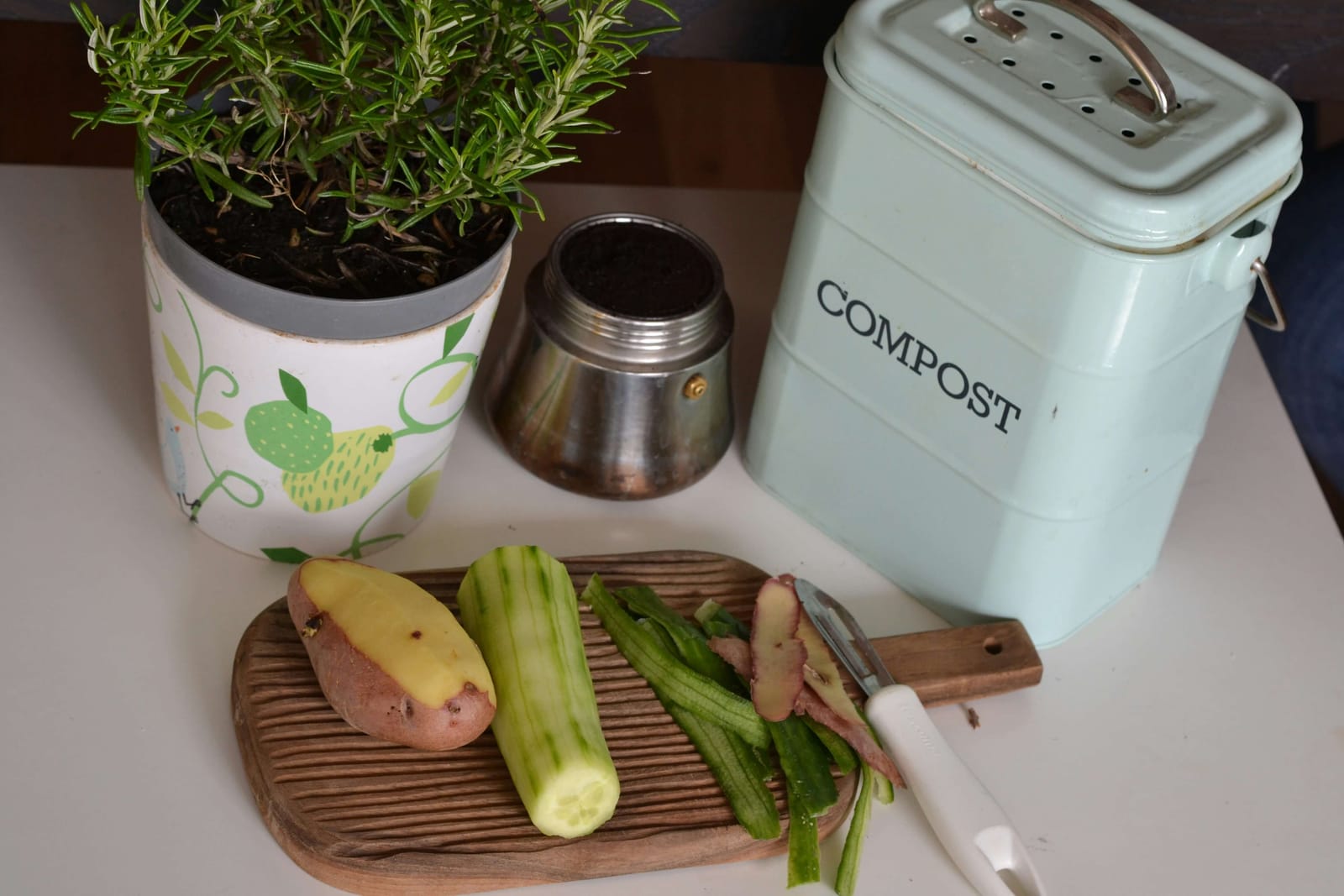Hey there, fellow foodies! Are you ready to chop veggies like a pro? We've got a treat for you – our top 5 picks for Nakiri knives. These Japanese beauties are not just any knives; they're like the secret ninjas of the kitchen, slicing and dicing with amazing precision. Whether you're a kitchen wizard or just starting out, we've scoured the market to find the best Nakiri knives that'll make chopping those veggies a breeze. From sleek, professional-grade blades to budget-friendly finds, our list has got you covered. So, grab your apron, and let's jump into the world of Nakiri knives – your veggies won't know what hit them!
🤝As an Amazon Associate, we earn from qualifying purchases made through our links, at ZERO additional cost to you.
5 Best Nakiri Knife Reviews
- Best Overall: Yoshihiro NSW 46 Layers Hammered Damascus
- Best Runner-Up: Zelite Alpha-Royal Nakiri Infinity Knife
- Editor's Choice: Wusthof Classic Hollow Edge
- Best on a Budget: Mercer Culinary Nakiri Knife
- Best for Durability: Oxford Chef Knife 6.5 Inch
1. Best Overall
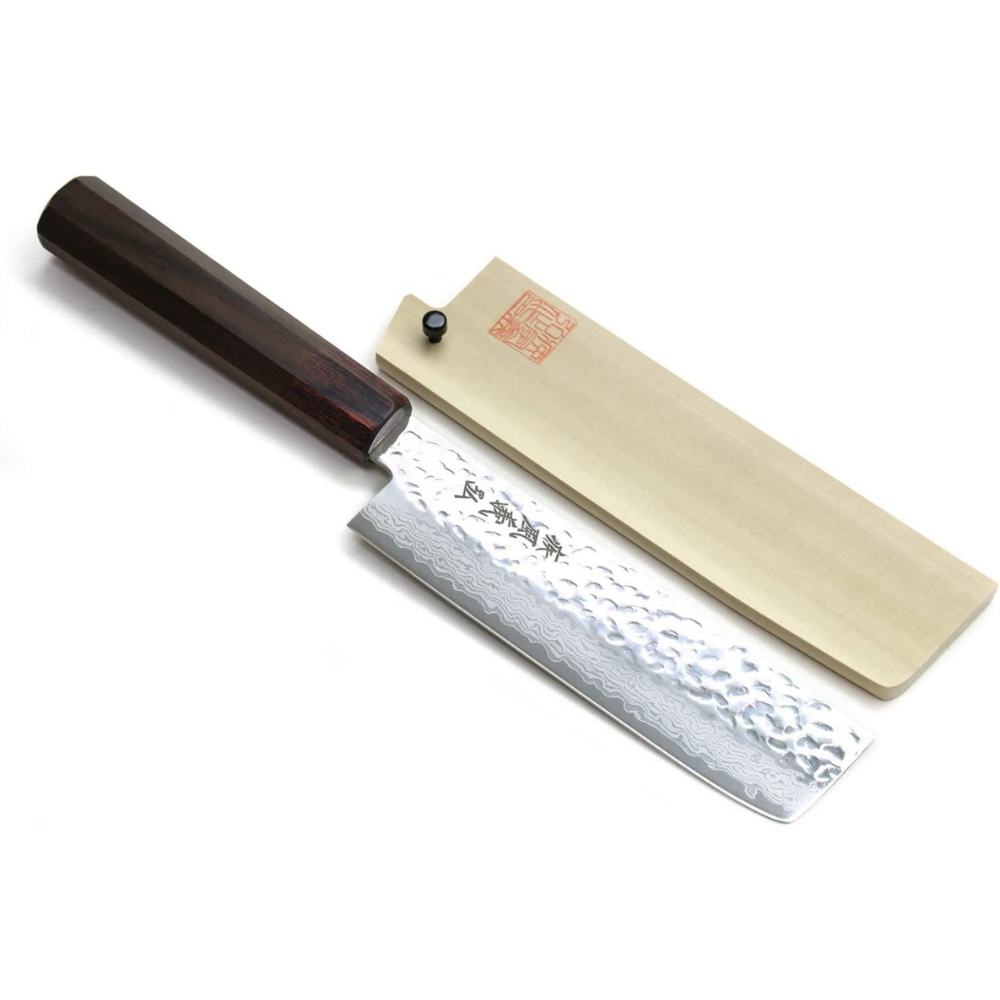
Yoshihiro NSW 46 Layers Hammered Damascus
Despite being the most expensive, its traditional Japanese craftsmanship, razor-sharp edge, and aesthetic appeal make it the best overall choice for those who view cooking as an art form.
What We Love
- Thin Blades: Designed for maintaining a sharp edge.
- Hammered Finish: Adds beauty and functionality.
- Lightweight: High performance without the heft.
- Dual-Edged: Asymmetrically designed for versatile cutting.
- Japanese Craftsmanship: Made in Japan with traditional Wa-style handle.
What to Keep in Mind
- High Maintenance: Requires careful handling to prevent edge damage.
- Non-Waterproof Handle: Prone to weathering over time.
Why It Might Be Right for You
You're the kind of chef who sees cooking as a form of art, and every stroke of the knife is like a brushstroke on a canvas. The Yoshihiro NSW 46 Layers Hammered Damascus is more than just a knife; it's an extension of your culinary creativity. With its thin, razor-sharp blades and hammered finish, this knife turns every cut into a masterpiece. Its high hardness level allows for a compact and sharper edge, making it a versatile tool for any kitchen task. If you're someone who values both form and function in your kitchen tools, this knife is your perfect match.
Customer Review (source: Amazon)
I've had knives from Yoshihiro before, and this one is just as beautiful and sharp. It makes chopping veggies not just easy but fun. Just be careful, it's super sharp right out of the box. And a bonus, if it ever needs professional sharpening, it goes back to the master knife makers in Japan. Definitely worth the value.
2. Best Runber-Up
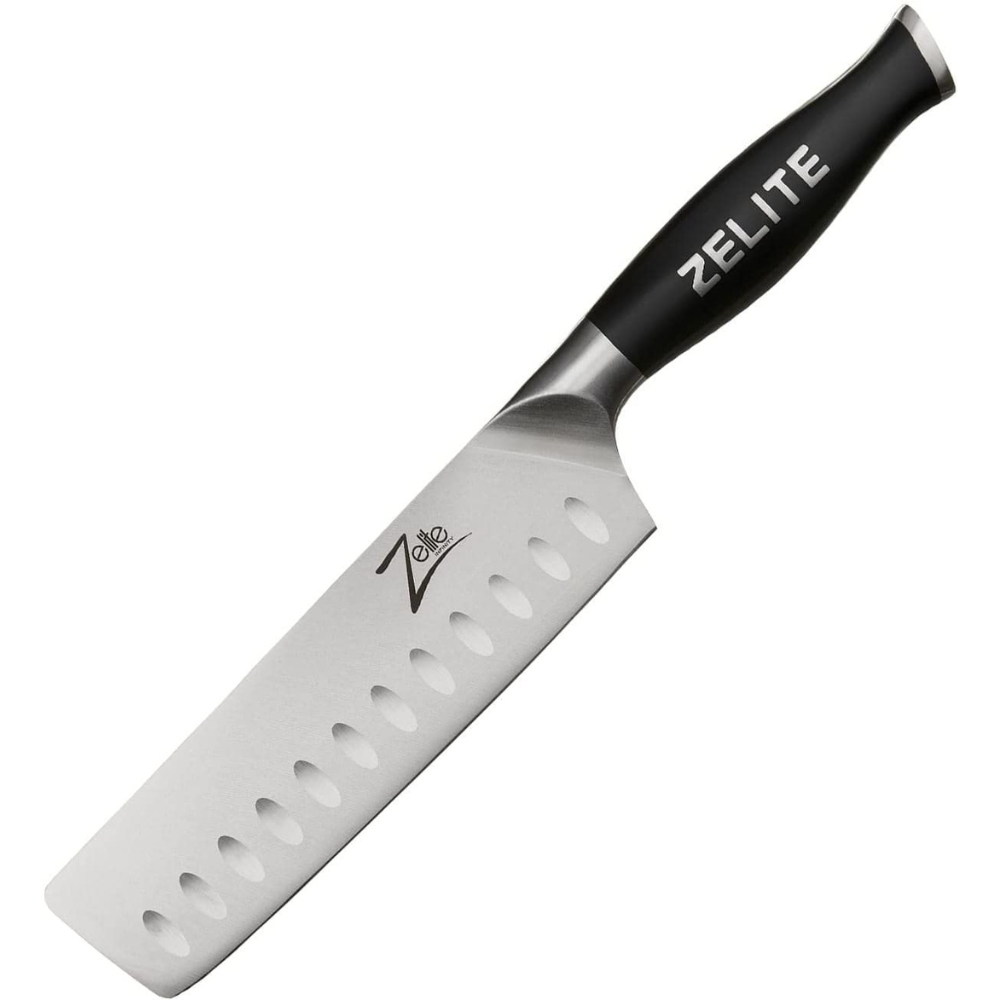
Zelite Alpha-Royal Nakiri Infinity Knife
With its FDA-approved non-stick coating and ergonomic design, this knife offers a balance of performance and comfort, making it ideal for those who spend a lot of time in the kitchen.
What We Love
- Damascus Steel: Known for its durability and strength.
- FDA-Approved Coating: Non-sticking resin for easy slicing.
- Color Variety: Available in vibrant colors for personalized choice.
- German Steel Quality: High carbon stainless steel for lasting performance.
- Comfort & Balance: Ergonomic full tang handle with a tapered bolster.
What to Keep in Mind
- Half-Tang: May result in handle instability over time.
Why It Might Be Right for You
You've always been the type to value both comfort and efficiency in your kitchen tools. The Zelite Alpha-Royal Nakiri Infinity Knife is like the luxury car of kitchen knives. Imagine effortlessly slicing through vegetables and meats, thanks to its high carbon stainless steel and ultra-deep blade that minimizes surface drag. But it's not just about the blade; the ergonomic, full-tang handle is designed for the chef's preferred pinch grip style, offering you total control and comfort. If you're someone who's been waiting for a knife that combines robust performance with extreme comfort, your search ends here. Plus, with its risk-free lifetime warranty, this knife is more than an investment; it's a commitment to elevating your culinary game.
Customer Review (source: Amazon)
I'm a knife connoisseur with a collection that includes Wüsthof and custom-made pieces. When I got the Zelite Nakiri knife, I was stunned by its superior quality. It's balanced, hefty, and the handle is a dream. It's a chef-quality knife at a fraction of the cost of my Wüsthof knives. I'm excited to gift it to my son and might even get one for myself. Trust me, you won't be disappointed.
3. Editor's Choice
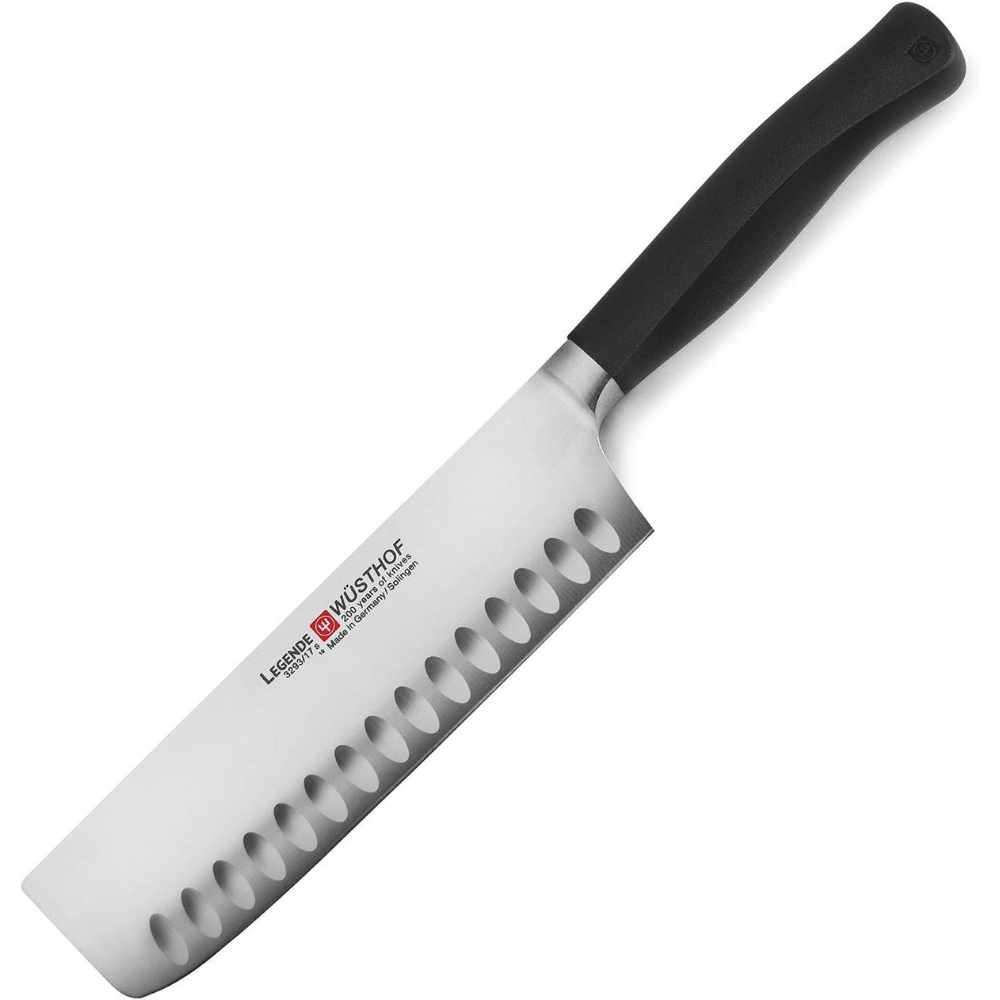
Wusthof Classic Hollow Edge
This knife offers a blend of versatility, sharpness, and durability, making it a top pick for any kitchen and deserving of the Editor's Choice.
What We Love
- Full-Tang High-Carbon Steel: Ensures durability and balance.
- PEtec Sharpness: 20% sharper blade with longer edge retention.
- 58 Rockwell Hardness: Exceptional blade clarity.
- Triple-Riveted POM Handles: Resistant to discoloration and fading.
- Made in Solingen, Germany: Comes with a lifetime warranty.
What to Keep in Mind
- Japanese-Inspired Blade: May require some getting used to.
- Price: Premium quality comes with a premium price tag.
Why It Might Be Right for You
Picture yourself in a bustling kitchen, the aroma of spices filling the air. You reach for your Wusthof Nakiri Knife, and it feels like an extension of your hand. Each slice of a vegetable is a work of art, precise and effortless. This isn't just a knife; it's your culinary wand, turning every meal into a magical experience. If you value craftsmanship and are willing to invest in quality, this knife could be your kitchen game-changer.
Customer Review (source: Amazon)
I work a garde manger station and let me tell you, this knife is a game-changer for vegetable prep. It's boosted my speed and precision when chopping onions, celery, and peppers. If you're into making a lot of veggie dishes at home or in a professional setting, this knife is a must-have.
4. Best on a Budget
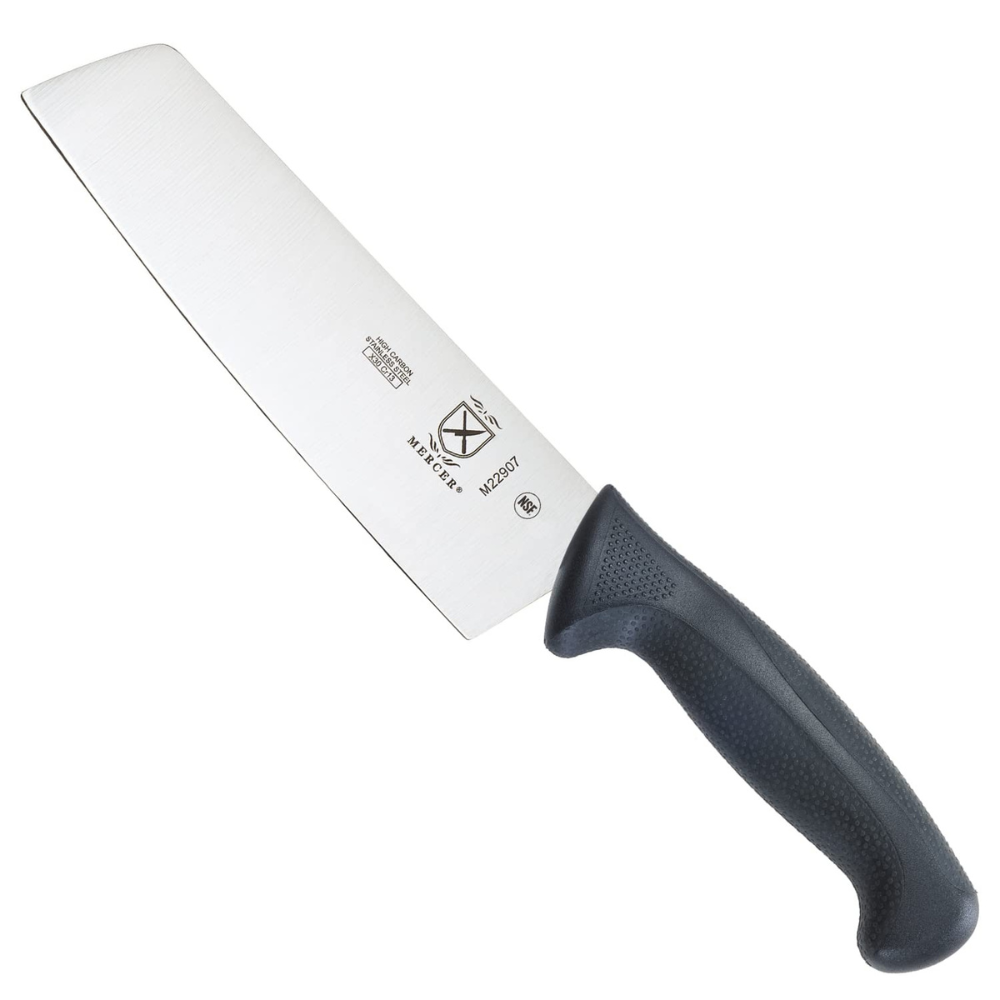
Mercer Culinary Nakiri Knife
Offering features like a full-tang blade and anti-rust coating at a mid-range price, this knife is the best option for budget-conscious consumers.
What We Love
- Anti-Rust Coating: Ensures longevity and durability.
- Full-Tang Blade: Forged for greater strength and balance.
- Dishwasher Safe: Convenient cleaning options.
- Delrin Handle: Water-resistant and easy to grip.
- Affordable: Mid-range price with high ratings.
What to Keep in Mind
- Regular Sharpening: Blade will require frequent maintenance.
- Dishwasher Not Recommended: Hand washing is advised for longevity.
Why It Might Be Right for You
You're a practical person who loves to cook but doesn't see the need to break the bank for a quality knife. Enter the Mercer Culinary Nakiri Knife. This knife is a hidden gem in the culinary world, offering features like a full-tang blade and an anti-rust coating that you'd expect from more expensive brands. Its Delrin handle is not only comfortable but also water-resistant, making it a reliable companion in your kitchen adventures. If you're someone who wants quality without the hefty price tag, this knife is your ticket to elevating your cooking game without emptying your wallet.
Customer Review (source: Amazon)
I've got a collection of expensive forged knives, but after sharpening this one, it's become my go-to for daily food prep. It slices through veggies, fruits, and meats like chicken breast with minimal effort. If you're not a pro at hand-sharpening, don't worry; an electric or manual sharpener works just fine. Now that it's sharpened, I'm really enjoying using this knife.
5. Best for Durability
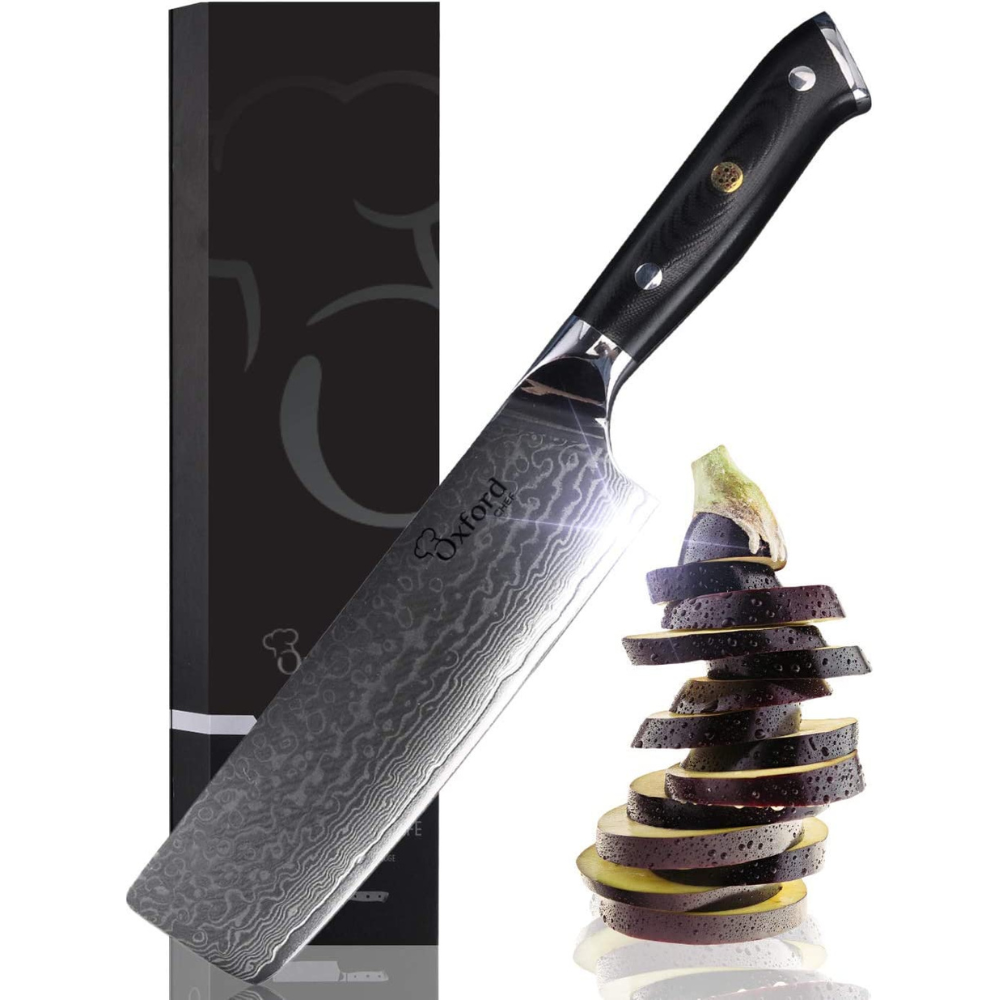
Oxford Chef Knife 6.5 Inch
With its unique cryogenic nitrogen cooling method and high Rockwell hardness score, this knife is the best choice for those who prioritize long-lasting durability in their kitchen tools.
What We Love
- Knuckle Clearance: Designed for comfortable use without knuckle interference.
- Honbazuke Technique: Mirror finish at 8-12 degrees angle per side for sharpness.
- Versatile Edge: Ideal for slicing, mincing, and cutting various foods.
- High Carbon Steel: Full-tang design for maximum durability.
- G-10 Handle: Military-grade and impervious to environmental conditions.
What to Keep in Mind
- Rockwell Hardness: Score of 62 may make the blade brittle for some tasks.
Why It Might Be Right for You
You've always been the type to appreciate the finer things in life, especially when it comes to your kitchen tools. The Oxford Chef Knife isn't just another knife; it's a statement of your commitment to quality. With its high carbon stainless steel and full-tang design, this knife promises durability and strength. The unique cryogenic nitrogen cooling method ensures that the blade remains strong, scoring an impressive 62 on the Rockwell hardness scale. If you're someone who believes that a knife should be both a workhorse and a piece of art, then this is the culinary masterpiece you've been waiting for.
Customer Review (source: Amazon)
I cook a lot of international dishes and have a variety of high-quality knives, but I find myself reaching for the Nakiri Chef Knife the most. Its design is genius for both veggies and meats—short enough for control and long enough for bigger cuts. The rounded tip is a game-changer for precision. My only gripe is that it dulls a bit quickly, but a quick sharpen brings it back to life. Plus, it's a looker in the kitchen. Highly recommend!
How We've Made Our Selection
In a market flooded with options, choosing the right nakiri knife can be a daunting task. From different brands to various materials and features, the choices can be overwhelming. That's where we come in.
Our Expertise: Our goal is to provide you with expert insights into these knives, even if we don't have personal experiences with each product. We've conducted extensive research and considered user feedback, including customer reviews from Amazon, to evaluate their performance, durability, and ease of use. Additionally, we'll compare these knives against their competitors to help you find the perfect match for your culinary needs.
Our Process: Our editors have invested time in understanding each product and its company. We've scrutinized everything from the type of steel used in the blade to the ergonomics of the handle. We've also considered factors like edge retention, ease of sharpening, and overall user satisfaction.
What is a Nakiri Knife Used For?
A Nakiri knife, with its distinctive rectangular blade, is a traditional Japanese vegetable knife designed specifically for chopping, slicing, and dicing vegetables. Its straight edge is perfect for making clean cuts all the way down to the cutting board, without the need for a horizontal push or pull. This makes it ideal for tasks like cutting thin, even slices of cucumber, dicing onions, or finely chopping herbs. The Nakiri's wide blade also helps in scooping up the chopped vegetables to transfer them to a pan or bowl. While it's primarily used for vegetables, its sharp edge and comfortable handling make it a versatile tool in the kitchen for a variety of slicing tasks. Its unique design and specialized function make it a favorite among chefs and home cooks who frequently prepare vegetable-centric dishes.
How to Use a Nakiri Knife
Using a Nakiri knife, a staple in Japanese cuisine, involves a specific technique to make the most of its design. Here's how to use it effectively:
Proper Grip: Hold the Nakiri knife by gripping the handle firmly near the base of the blade. This grip gives you better control and precision.
Straight Up and Down Motion: Unlike other knives that require a rocking motion, the Nakiri is best used with an up-and-down chopping motion. Its straight edge allows for clean cuts without needing to push or pull the knife horizontally.
Cutting Vegetables: The Nakiri is ideal for slicing, dicing, and chopping vegetables. Use it for making uniform slices of cucumber, finely chopping herbs, or dicing onions. Its wide blade can also be used to scoop up the cut vegetables and transfer them to a bowl or pan.
Maintaining Even Pressure: Apply even pressure throughout the cut. The Nakiri's sharp, straight edge will do most of the work, so you don't need to apply excessive force.
Safety First: Always use a cutting board and keep your fingers tucked away from the blade. The Nakiri is very sharp, and proper technique is important to avoid accidents.
Versatility in the Kitchen: While primarily designed for vegetables, the Nakiri can also be used for other tasks like slicing fruit or cutting through soft meats, making it a versatile addition to your kitchen.
For a visual and detailed guide on how to use a Nakiri knife effectively, check out the video "How to Use a Nakiri - Japanese Kitchen Knife Skills" by Knifewear on YouTube. It offers excellent insights and techniques to enhance your knife skills with a Nakiri.
Tips for Cleaning and Maintenance
Cleaning: Maintaining the cleanliness of your Nakiri vegetable knife, a quintessential Japanese knife, is crucial for its longevity. After each use, it's important to thoroughly clean the knife to prevent rust, especially since the blade may not be made of stainless steel. The best way to clean your Nakiri knife is by using warm water and mild dish soap. Handle the knife by its handle and use a sponge or brush to clean the blade, avoiding direct contact with your fingers to prevent cuts. After washing, promptly dry the knife with a soft, dry towel to avoid any water spots or potential rusting.
Sharpening: Sharpening your Nakiri knife is essential for maintaining its cutting efficiency. You can sharpen this Japanese knife using a whetstone or an electric sharpener. Whetstones are often preferred for sharpening Japanese knives as they allow for more precise control and help maintain the blade's quality. If using a whetstone, remember to soak it in water first and follow the recommended sharpening angles. Electric sharpeners offer convenience, but be cautious to avoid over-sharpening. Regular sharpening will ensure your Nakiri knife remains a reliable tool for precise vegetable chopping.
Frequently Asked Questions
How does the blade length of a Nakiri knife affect its performance?
The blade length of a Nakiri knife is optimized for kitchen tasks like chopping vegetables. A longer blade length can offer more leverage and make quick work of larger vegetables, while a shorter blade provides more control for finer cuts.
What makes the Wusthof Classic Nakiri Knife a standout option?
The Wusthof Classic Nakiri Knife is renowned for its high-quality construction and razor sharp edge. It's an excellent choice for anyone looking for a sharp blade that excels in chopping vegetables. Its reputation places it among the top japanese knives available on the market.
How does a Nakiri knife compare to a santoku knife?
While both are japanese knives, a Nakiri knife is specialized for chopping vegetables with its flat cutting edge. In contrast, a santoku knife has a more curved blade shape and is versatile, capable of slicing, dicing, and chopping various types of food.
Is a Nakiri knife sharper than a regular sharp knife?
Yes, a Nakiri knife is designed with a razor sharp edge specifically for tasks like chopping vegetables, making it a sharper choice compared to a regular sharp knife for these tasks.
What is a Nakiri knife?
A Nakiri knife is a specialized Japanese vegetable knife, distinct from a typical chef's knife due to its straight, thin blade. It's specifically designed for precise slicing, dicing, and chopping of vegetables. Unlike a chef's knife, which has a curved blade ideal for a rocking motion, the Nakiri's flat edge ensures complete contact with the cutting board for uniform cuts. Its unique rectangular shape and sharpness make it a preferred choice for efficiently preparing vegetable dishes in both professional and home kitchens.
Items Reviewed:
- Best Overall: Yoshihiro NSW 46 Layers Hammered Damascus
- Best Runner-Up: Zelite Alpha-Royal Nakiri Infinity Knife
- Editor's Choice: Wusthof Classic Hollow Edge
- Best on a Budget: Mercer Culinary Nakiri Knife
- Best for Durability: Oxford Chef Knife 6.5 Inch

Best Overall: Yoshihiro NSW 46 Layers Hammered Damascus
Despite being the most expensive, its traditional Japanese craftsmanship, razor-sharp edge, and aesthetic appeal make it the best overall choice for those who view cooking as an art form.
Please note that the reviews on this page have been edited for readability and clarity while maintaining the essence of the original content.
Further Reading
- Explore the history and origins of the Nakiri knife, in our article titled "The History and Origins of the Nakiri Knife: A Japanese Gem.
- For expert tips on mastering your Nakiri knife, be sure to check out the article "How to Use a Nakiri - Knife Skills 101" by Knifewear.
